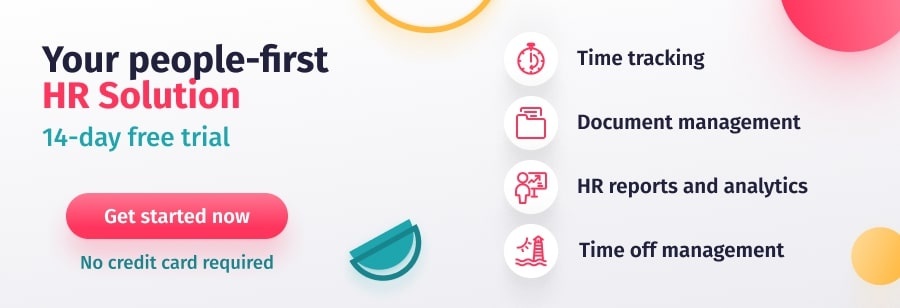Times have changed and it is no longer common for people to remain at the same company for the duration of their working life. It is far more customary for employees to change positions and move onto other companies on a fairly regular basis. To adapt to this trend, companies have to embrace new working models and organizational structures. One such example is the agile organization.
Companies like Google, Amazon, and Netflix have demonstrated the potential success of developing an agile team structure. However, moving to an agile operating model is not easy, especially for established companies with defined hierarchies and working models. It is therefore vital for companies to understand what these structures are and how they work before making any organizational changes.
In this post, we will take a look at some of the common characteristics of an agile organization. We will also look at some of the different ways agile teams can be organized. Finally, we will discuss some of the benefits of adopting an agile organizational structure.
- Agile Structure Definition
- Characteristics of an Agile Organization
- How are Agile Teams Organized?
- Why Adopt an Agile Organizational Model?
- Keys to Successful Agile Team Structures
- Organize Your People with This Software ✅
Agile Structure Definition
An agile organization is a company whose structure, policies, and capabilities have been designed to enable employees to quickly respond to changing environments. The primary focus of this organizational approach is adapting to evolving customer needs and changes in the business environment.
With a traditional hierarchical organizational structure, power flows vertically, and employees are departmentalized. In other words, each employee has a clearly defined role and position, and there is a rigid chain of command.
In contrast, agile organizations are built on a network of empowered teams that operate with high standards of alignment, accountability, expertise, transparency, and collaboration. This enables them to react to the emergence of new competitors, rapid advancements in technology and sudden shifts in overall market conditions.
Characteristics of an Agile Organization
Here are some of the typical characteristics of an agile organization:
- There is no top-down hierarchy or traditional chain of command.
- A customer-centric approach focused on understanding the needs, wants and desires of customers.
- Shared purpose and vision. All individuals, teams and departments use an open communication style based on collaboration and sharing to understand how they fit into the overall purpose and vision.
- An empowered agile team structure encourages active partnerships and transparent operations.
- Employees feel comfortable sharing best practices and seeking continuous improvement opportunities.
- They embrace change, encourage experimentation and make decisions quickly.
- The development of proactive employees and emotional intelligence in the workplace is highly valued.
- Agile organizations constantly seek to improve the effectiveness and impact of how they work.
- The corporate culture is based on a strong growth mindset.
How are Agile Teams Organized?
When it comes to developing an agile organization, there are a number of agile team structures you can go for. The model you choose will depend on a number of factors, including the size of your organization, the resources at your disposal, and whether or not teams will be broken down into sub-teams.
You also need to take into account responsibility, coordination, and sustainability when you develop your structure.
Here are a few examples:
- Generalist: where each team member has a general understanding of a wide variety of topics. Team members can work on a number of diverse tasks and switch easily with their colleagues. Typically seen in smaller organizations.
- Specialist: where each team member has a specific area of expertise and a defined role. This structure is more common in larger agile organizations.
- Hybrid: a combination of both generalists and specialists. Advantages of a hybrid structure include improved teamwork, high-quality deliverables, and a greater sense of ownership.
- Parallel: team members change tasks with each new project. This approach requires extensive training so that team members can adapt to a variety of roles.
- Sub-team: essentially, a team within a team. Used to break large projects down into manageable areas.
Why Adopt an Agile Organizational Model?
There are a number of benefits to developing an agile team structure in your organization. The most obvious is that it offers the agility to adapt to changing environments and requirements. The benefits don’t stop there, though.
Here are a few more…
More Efficient, Dynamic & Adaptable
The mindset and culture that an agile organization is based around enable it to react to the emergence of new competitors, rapid advancements in technology and sudden shifts in overall market conditions. This makes it more dynamic and adaptable. And because agile team structures tend to be distanced from bureaucratic structures, things usually run far more efficiently, increasing workplace productivity.
More Flexibility
Another key benefit of eliminating the hierarchical structure is that you gain increased flexibility. This is especially true for generalist and parallel team structures where team members do not have fixed roles and responsibilities. And this flexibility is precisely what enables an agile organization to adapt to changing markets and the introduction of new industry players. This also means that you can tap into new opportunities and keep your brand up-to-date and relevant.
Happier Employees
Experience has shown that an agile team structure is far more likely to result in happier employees. This is because the work culture is based around the concept of improved teamwork and workplace motivation. And because your employees share a common vision and purpose, they tend to find more meaning in the work they do. This is because they feel that you value their opinions and feedback. They are also more motivated and experience less performance anxiety at work because they are given more opportunities to learn, grow, and develop their skill sets.
Another important factor is that agile organizations also tend to favor a better work-life balance for employees, reinforcing the concept of psychological safety at work. This results in increased output, lower absenteeism, and increased retention.
Responsive & Collaborative
Another important benefit of creating an agile organization is that it creates a more responsive and collaborative environment. This is because your employees feel more empowered to act.
These organizational structures also free up managers to do what only they do best: create and communicate long-term visions, work on goals and KPIs, and implement strategies to achieve organizational growth.
Happier Customers
The final obvious benefit of an agile organization is the positive effect it has on customers. This is because your structures are customer-centric and you focus on the needs and desires of consumers, rather than prioritizing your stakeholders.
The resulting increased customer satisfaction levels, coupled with innovation and an understanding of what customers want and need, results in increased customer loyalty and, ultimately, increased profit. Customers are more engaged and trust the brand more, which improves brand reputation, creates more brand advocates, and attracts further customers in turn, enlarging the customer and market footprint of a brand.
Keys to Successful Agile Team Structures
As a human resources professional, you have the power to change the mindset, systems, processes, and structures of your organization. This includes the management and coordination of leadership programs, employee engagement, learning and development programs, performance management, communication and feedback, and organizational design.
One of the keys to developing a successful agile organization is having access to the right tools to support the changes you will be implementing throughout the process. Factorial’s all-in-one HR management software is one such solution. You can use the various features to manage all aspects of your agile organization. This includes managing more agile performance management processes and sharing feedback within self-managed teams. You can also use it to improve each stage of the employee experience.
What’s more, by implementing Factorial’s people management software solution you also get the following benefits:
- Increased efficiency and productivity
- Improved visibility
- Improved customer experience
- User-driven innovation and optimized performance
- Accuracy and regulatory compliance
- Improved reporting in real-time
- Centralized HR processes and secure data storage
Sign up now and start improving your HR management with Factorial!




